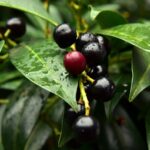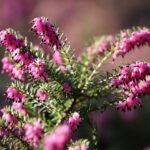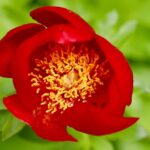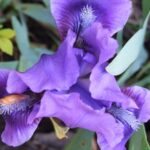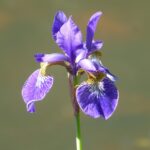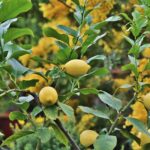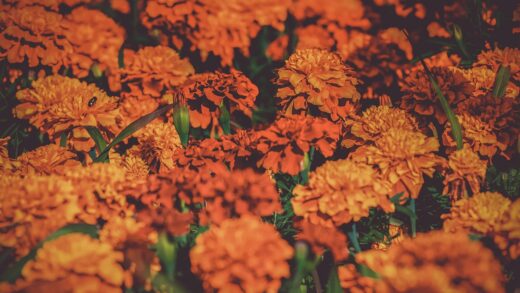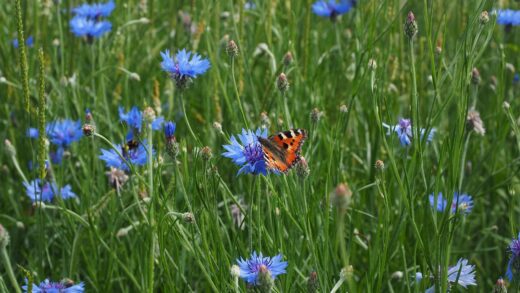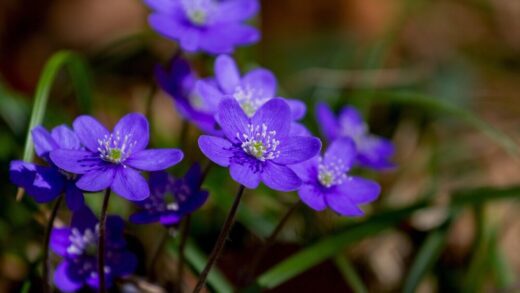Providing the correct balance of nutrients is a key aspect of cultivating a healthy and floriferous lantana, yet it is an area where restraint is often more beneficial than overzealousness. Lantana is not a plant that demands a rich diet; in fact, it has adapted to thrive in soils that are relatively lean. Over-fertilization is one of the most common mistakes gardeners make, leading to a plant that produces lush, vigorous green foliage but disappointingly few flowers. Understanding that less is more when it comes to feeding this particular species is the first step toward achieving that coveted season-long display of vibrant, colorful blooms. The goal is to support healthy growth without pushing the plant into an excessive vegetative state.
The plant’s modest appetite for nutrients is a reflection of its native habitat, where it often grows in rocky or sandy soils with low fertility. This natural adaptation means that in many average garden soils, lantana can perform beautifully with little to no supplemental fertilizer at all. A soil that is rich in organic matter will typically provide all the necessary nutrients for the entire growing season. The primary focus for the gardener should be on providing the right growing conditions—full sun and excellent drainage—as these factors have a much greater impact on blooming than a heavy feeding schedule.
When fertilization is deemed necessary, such as for plants in very poor soil or those grown in containers where nutrients are finite, the type of fertilizer used is important. A balanced, all-purpose fertilizer is generally a good choice. However, formulations that are high in nitrogen should be avoided. Nitrogen is the nutrient primarily responsible for promoting leaf and stem growth (vegetative growth). While some nitrogen is necessary for a healthy plant, an excess amount will signal the lantana to focus its energy on producing leaves rather than flowers.
Ultimately, observing your plant is the best guide to its nutritional needs. A healthy lantana that is blooming well likely needs no additional fertilizer. If the plant’s leaves appear pale or yellow and growth is stunted—and you have already ruled out issues with watering, sunlight, and pests—then a light feeding may be beneficial. By adopting a conservative and observant approach to fertilization, you can easily meet your lantana’s nutrient requirements without inadvertently suppressing its magnificent floral display.
Understanding the role of key nutrients
To effectively fertilize any plant, it is helpful to understand the basic roles of the three primary macronutrients, represented by the N-P-K ratio on fertilizer packaging. The first number, N, stands for nitrogen, which is the main driver of vegetative growth. Nitrogen is essential for the formation of chlorophyll, the pigment that makes leaves green and is vital for photosynthesis. For lantana, a sufficient amount of nitrogen is needed for healthy foliage, but an excess will result in a green, leafy plant with very few flowers, which is counterproductive to its ornamental purpose.
The second number, P, represents phosphorus. This nutrient is crucial for a wide range of plant functions, but it is most famously associated with promoting strong root development, flowering, and fruit production. For a flowering plant like lantana, adequate phosphorus is essential for initiating bud set and supporting vibrant, numerous blooms. This is why fertilizers formulated for flowering plants often have a higher middle number. A lack of phosphorus can lead to stunted growth and poor flowering performance.
The third number, K, stands for potassium. Potassium is an all-around regulator of a plant’s internal processes. It plays a vital role in improving the plant’s overall vigor, helping it to withstand stress from drought, temperature extremes, and disease. It is also important for the efficient movement of water and nutrients throughout the plant’s tissues. For lantana, sufficient potassium ensures that the plant is robust, healthy, and resilient, which indirectly supports its ability to produce and sustain a long blooming season.
While N, P, and K are the macronutrients needed in the largest quantities, plants also require a range of micronutrients, such as iron, manganese, and zinc, for healthy growth. In most garden soils, these are naturally present in sufficient amounts. However, in container-grown plants or in soils with a very high pH, deficiencies can sometimes occur, often manifesting as yellowing leaves with green veins (chlorosis). Using a balanced fertilizer that includes micronutrients can help prevent these issues.
Fertilizing lantana in garden beds
Lantanas planted directly in the garden are generally low-maintenance when it comes to feeding. If your garden soil is reasonably healthy and amended with compost or other organic matter from time to time, your lantana may not require any additional fertilizer at all. The slow breakdown of organic matter typically provides a steady and sufficient supply of nutrients to meet the plant’s modest demands throughout the entire growing season. This is the ideal scenario, as it creates a self-sustaining and low-effort environment for the plant.
If you are planting in soil that is known to be very poor, sandy, or lacking in nutrients, a single application of a balanced, slow-release granular fertilizer in the spring is a good practice. This should be done as new growth begins to emerge. Choose a fertilizer with an even N-P-K ratio, such as 10-10-10 or 14-14-14, and apply it according to the package directions. Sprinkling the granules on the soil surface around the base of the plant and gently scratching them in, followed by a thorough watering, will provide a gentle, season-long feeding.
It is crucial to avoid applying fertilizer directly against the stem or crown of the plant, as this can cause chemical burns. Instead, distribute it evenly over the root zone, which typically extends to the drip line (the outer edge of the plant’s foliage). For lantana, it is always better to err on the side of using too little fertilizer rather than too much. A single spring application is almost always enough; repeated feedings during the summer are unnecessary and can inhibit blooming.
An excellent organic alternative to synthetic fertilizers is to simply top-dress the soil around the plant with a layer of compost each spring. A 2-3 centimeter layer of well-rotted compost provides a wide range of macro- and micronutrients that are released slowly as the compost breaks down. This method not only feeds the plant but also improves the soil structure, water retention, and overall health of the soil ecosystem, creating the perfect growing environment for your lantana.
Feeding schedule for container-grown lantana
Plants grown in containers have different fertilization needs than those in the ground because they are in a closed system with a limited amount of soil. The nutrients present in the initial potting mix are gradually used up by the plant and also leached out with each watering. Therefore, container-grown lantanas will require regular feeding throughout the growing season to continue performing at their best and producing a constant supply of flowers. The frequency and type of fertilizer are key to success.
A good strategy for potted lantanas is to use a water-soluble or liquid fertilizer. This allows for precise control over the amount of nutrients the plant receives. Starting about a month after planting, you can begin feeding your lantana with a balanced liquid fertilizer, such as a 20-20-20 formula, diluted to half the strength recommended on the label. Applying this diluted fertilizer every two to four weeks during the spring and summer will provide a steady stream of nutrients without overwhelming the plant.
Alternatively, you can incorporate a slow-release granular fertilizer into the potting mix when you first plant your lantana. These products are designed to release a small, consistent amount of nutrients every time you water, providing a low-maintenance feeding solution for several months. Check the product label to see how long it is effective and reapply as needed, typically only once or twice during the growing season. This method is an excellent “set it and forget it” option for busy gardeners.
Always make sure the soil is moist before applying any type of liquid fertilizer. Applying fertilizer to dry soil can scorch and damage the plant’s roots. Water the plant thoroughly with plain water first, and then apply the fertilizer solution. As the end of the growing season approaches in autumn, you should stop fertilizing. This allows the plant to slow its growth and prepare for dormancy or the end of its annual cycle, rather than encouraging tender new growth that would be damaged by the cold.
Recognizing signs of nutrient imbalances
Observing your lantana’s leaves can provide valuable clues about its nutritional health. While under-fertilization is less common, it can manifest as a general lack of vigor, stunted growth, and pale green or yellowish leaves. A specific nitrogen deficiency, for example, typically causes the older, lower leaves to turn yellow first, as the plant moves this mobile nutrient to support new growth. If you see these signs and have ruled out other causes, a light feeding with a balanced fertilizer is warranted.
More commonly with lantana, the signs of a nutrient imbalance are related to over-fertilization, particularly with nitrogen. The most prominent symptom is a plant that is large, lush, and deep green but produces very few or no flowers. The plant is investing all of its energy into growing leaves and stems instead of blooming. If you notice this, cease all fertilization immediately. In some cases, you can help correct the issue by ensuring the plant receives plenty of water to help flush the excess nitrogen from the soil.
A phosphorus deficiency, while less frequent, can also affect blooming. Signs may include stunted growth and sometimes a purplish cast to the leaves, although poor flowering is the most obvious symptom. If your plant is not blooming despite having adequate sun and not being over-fed with nitrogen, a fertilizer with a higher middle number (phosphorus), often marketed as a “bloom booster,” could be beneficial. Use these products sparingly and exactly as directed, as a one-time application is often enough to correct the issue.
It is important to remember that not all yellow leaves are caused by a nutrient deficiency. Overwatering is a very common cause of chlorosis (yellowing leaves) in lantana. Before you reach for the fertilizer, always assess your watering habits and the soil moisture first. Soil pH can also play a role; if the soil is too alkaline, the plant may be unable to absorb certain nutrients like iron, even if they are present in the soil. A simple soil test can help diagnose these more complex issues if you suspect a persistent problem.
📷 Flickr / Szerző: Mauricio Mercadante / Licence: CC BY-NC-SA 2.0


